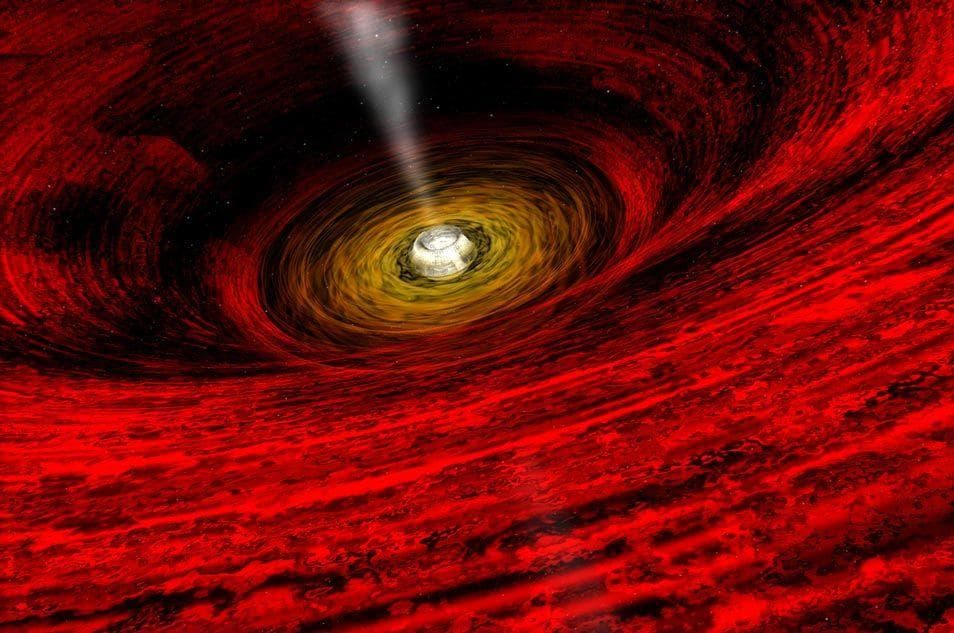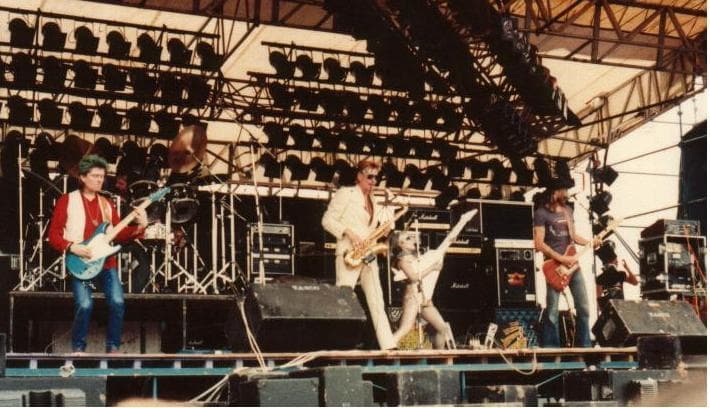-
(#10) The World Watched And Waited For The Moment Skylab Would Crash To Earth
NASA predicted the Skylab would fall to Earth before 1980. So, for a couple of years, people all over the world would occasionally look into the sky and wonder when it would happen and where it would land. After all, Skylab was about the size of a house; people could die when it hit Earth. A variety of landing sites were predicted, and the impending crash became a sort of shared joke.
Even Saturday Night Live joined in, with actor John Belushi offering up the weekend news by ramming a model of Skylab into a globe. People had Skylab Crash parties, some wore crash helmets, or t-shirts with bull's-eye targets. There were even spray cans of "Skylab Repellant" for sale.
-
(#7) The Program Was Not Without Problems
Though Skylab was carefully designed and planned, the first crew to arrive had to deal with immediate concerns. It turned out that when Skylab was lifting off into space, a meteoroid shield separated from the structure and was lost, along with a solar panel. By the time the astronauts arrived, the temperature inside Skylab's workshop was a dangerously sweltering 125F degrees.
The crew was able to install a parasol sunshade, which lowered the workshop temperature to a much more comfortable 75F degrees. The entire process of securing the space station took ten days.
-
(#2) It Was Designed To Go Up, Not Come Down
Launching Skylab was a piece of cake for NASA, as they'd been launching successfully for years. But, the size and scope of Skylab was quite different from the smaller capsules that splashed down after orbiting the earth or visiting the moon.
So, Skylab was actually launched with no firm plans as to how or when it would return to Earth.
-
(#3) Skylab Proved That Humans Could Live And Work In Space
After Skylab's first successful mission ended after 28 days in space in 1973, Dr. Ernst Stuhlinger, Associate Director of Science at the Marshall Space Flight Center, and Leland F. Belew, Manager of the Skylab program, wrote that “It may turn out to be the beginning of Man’s permanent foothold and settlement in space.”
A total of three separate Skylab crews successfully spent 171 days in space, with each new crew breaking the record set by the previous crew. There were no recorded instances of health problems or other concerns related to human life in space.
-
(#6) The Last Skylab Crew Lived In Space For 84 Days
Skylab's third and final mission launched on July 28, 1973, with goals to continue conducting scientific and medical experiments, and maintain the space station. The mission completed 858 Earth orbits and 59 days of solar and Earth experiments.
Notably, the third Skylab mission surpassed the previous record for humans in space, which had been set by the crew of Skylab 2 only weeks earlier. The third mission also conducted a six hour space walk, during which they conducted a replacement for a sun shield. Among the many science experiments performed during their 84 day mission included an experiment designed by a student that included live spiders.
-
(#13) Anita And Arabella -- Skylab's Web-Spinning Space Spiders
The third Skylab crew brought live spiders with them to conduct a student-designed experiment, studying what kinds of webs the spiders would spin in weightlessness. Student Judy Miles, from Lexington, MA, wanted to find out if spiders would be able to spin their webs in a near-weightless environment. The spiders were placed in their own picture-frame type boxes. Prior to liftoff, they were each given one fly to eat, and a small, soaked sponge for water.
The spiders were called Anita and Arabella. Once in space, both spiders began to make swimming motions, probably a reaction to suddenly losing Earth's gravity. Arabella managed to build a web, but the spiders did not fare well in space. Part of Arabella's web was removed in an effort to determine if she would try and rebuild, but she did not even attempt a second web. Both spiders became dehydrated and died during the mission. The webs were later examined and found to be of a finer thread than that from webs spun by the same spiders on Earth.
One of the spiders, Anita, is preserved at the Smithsonian Museum, where you can see her today.
New Random Displays Display All By Ranking
About This Tool
On October 1, 1958, NASA began formal operations. Since then, the space agency has achieved many milestone goals, including the Apollo moon landing, the Skylab space station, and the space shuttle. Skylab is the space station after the Apollo project, launched by the Saturn 5 rocket. Skylab was also the first space station in the United States and the largest spacecraft ever orbiting the earth.
This is one of the greatest achievements of mankind, which contributes to ultraviolet astronomy experiments, solar system research, and biological and medical research. It is a great time to learn more information and enjoy some available videos.
Our data comes from Ranker, If you want to participate in the ranking of items displayed on this page, please click here.
















